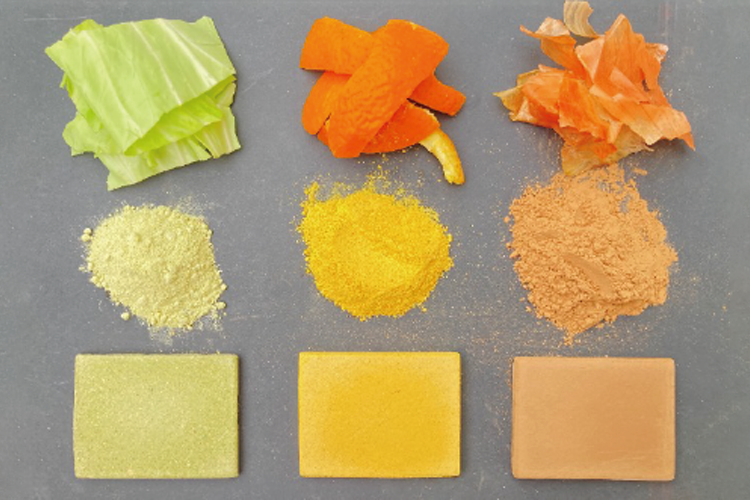May 26 2021
A majority of the people do not think about the food scraps they dispose of. But scientists from the Institute of Industrial Science at The University of Tokyo have devised a new technique to decrease food waste by recycling disposed vegetable and fruit scraps into strong construction materials.
 Researchers at The University of Tokyo Institute of Industrial Science repurpose food waste to build materials with a bending strength comparable to concrete and that still taste good. Image Credit: Institute of Industrial Science, the University of Tokyo.
Researchers at The University of Tokyo Institute of Industrial Science repurpose food waste to build materials with a bending strength comparable to concrete and that still taste good. Image Credit: Institute of Industrial Science, the University of Tokyo.
The amount of household and industrial food waste generated across the world is about hundreds of billions of pounds per year, a huge proportion of which includes edible scraps, such as vegetable and fruit peels.
This unsustainable practice is not just expensive but also environmentally unfriendly. Scientists have, therefore, been looking for new ways to recycle such organic materials into useful products.
Our goal was to use seaweed and common food scraps to construct materials that were at least as strong as concrete. But since we were using edible food waste, we were also interested in determining whether the recycling process impacted the flavor of the original materials.
Yuya Sakai, Study Senior Author, Institute of Industrial Science, University of Tokyo
The team borrowed a 'heat pressing' concept typically used to create construction materials from wood powder.
However, they used vacuum-dried, pulverized food scraps, like cabbage leaves, seaweed and pumpkin, orange, banana and onion peels as the constituent powders.
As part of the processing method, the food powder is mixed with water and seasonings and the mixture is pressed into a mold at high temperature. The team tested the bending strength of the resulting materials and observed their smell, taste and appearance.
With the exception of the specimen derived from pumpkin, all of the materials exceeded our bending strength target. We also found that Chinese cabbage leaves, which produced a material over three times stronger than concrete, could be mixed with the weaker pumpkin-based material to provide effective reinforcement.
Kota Machida, Study Senior Collaborator, Institute of Industrial Science, University of Tokyo
The new, strong materials were still edible, and the addition of sugar or salt enhanced their taste without decreasing their strength.The durable products were resistant to insects, rot and fungi, and did not undergo any major changes in taste or appearance upon exposure to air for four months.
Food waste is a global environmental concern and financial burden, and it is vital to devise techniques for recycling food scraps. The use of these substances to make materials sufficiently strong for construction projects but also retain their taste and edible nature paves the way for a broad range of creative applications from the one technology.